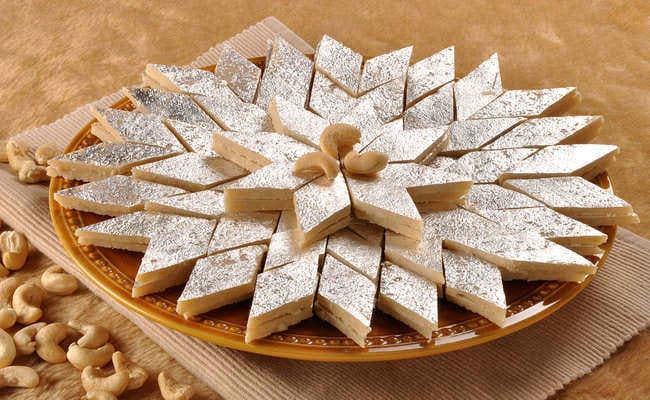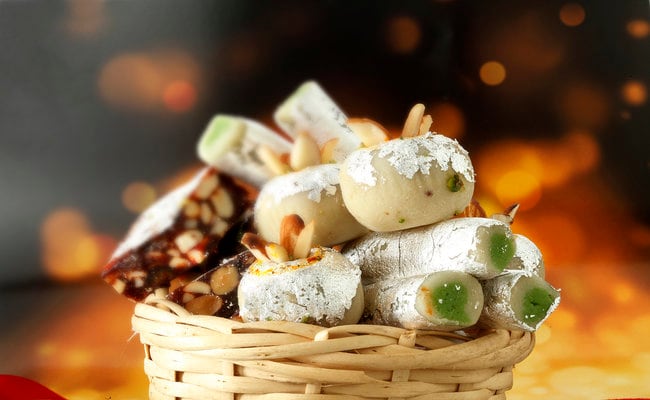
Highlights
- The eye-catching silvery glitter might not be silver at all
- It can often be substituted with low quality and toxic metals
- You can check for adulteration in the silver leaf with some simple testsCome Diwali and you cannot miss the lovely display of mithai and dry fruit decorated with Silver Leaf or chandi-ka-warq. Passers-by look at their rich glitter and are tempted to enter the shop and buy these food products. However, they are probably unaware that the eye-catching silvery glitter might not be silver at all but some other toxic metal.
Silver Leaf has been a part of Ayurveda medicine since centuries and was adopted into culinary art for garnishing. It was a particular favourite ingredient in Mughlai and Awadhi cuisine like shahi tukra, biryani, korma and kebabs and continues to be used today on paan, dry fruits, supari and elachi and other foods. Here are some reasons why:
1. It provides a rich opulent look to foods.
2. Silver has antimicrobial properties and so prevents growth of bacteria.
3. Prevents spoilage from contaminants.
4. Increases shelf life of foods where no other preservatives are used.

The eye-catching silvery glitter might not be silver at all but some other toxic metal.
Adulteration of Silver Leaf is Hazardous to Health
Adulteration often raises its head during the festive season and the unaware consumer can fall prey to it. Adulteration in Silver Leaf or chandi-ka-warq has been often detected by food regulators which include:
1. Substitution of silver with aluminium.
2. Poor quality of silver used which may not be of 999 purity.
3. Unhygienic preparation methods.
4. Unsanitary conditions in workshops can cause contamination which poses a risk of food borne diseases.
5. Traces of heavy metal contamination like nickel, lead, cadmium have been detected.
The Food Business Operators (FBOs) are themselves consumers so they must ensure full compliance of regulations and carry out self- inspection to ensure there is no adulteration of Silver Leaf in anyway.
Delhi High Court Stay
The Food Safety and Standards Authority of India has amended the regulations and has stated that Silver Leaf will not be manufactured using any material of animal origin at any stage of the manufacturing process. The Delhi High Court has stayed the implementation of this regulation on a PIL filed by traditional manufacturers of Silver Leaf that use animal intestines for preparing the chandi-ka-warq as this would lead to job losses for hundreds of workers. These manufacturers maintain that:
1. The method which has been used over hundreds of years does not contaminate the Silver Leaf nor change the quality of silver.
2. They urge that if some consumers have objections, then the Silver Leaf can be labelled as vegetarian or non-vegetarian.
One will have to wait for the decision of the Delhi High Court for this.

Simple Test to Check Adulteration in Silver Leaf
1. Wipe the silver leaf on top of sweets of foods. If the residue sticks to the fingers it is adulterated with aluminium.
2. Ignite a piece of Silver Leaf. If it is silver it will turn into a ball of silver, whereas aluminium will burn and leave behind ashes that are greyish black.
3. Place silver leaves in a test tube and add diluted hydrochloric acid. If it becomes turbid with a white precipitate it is silver because aluminium can neither become turbid or precipitate
4. Rub some silver leaf between the palms of the hand if it is silver it will disappear if it is aluminium it will become a small ball.
About Dr.Saurabh Arora
Dr. Arora heads the testing laboratory and research business at Arbro and Auriga, a position he has held for close to 11 years. These laboratories serve clients in the food, retail, hospitality, nutraceutical, pharmaceutical, cosmetics, agricultural, medical device, research, academics and real-estate industries. Dr Arora is a leading subject matter expert on food safety and has founded Food Safety Helpline, an online portal which facilitates the food industry to stay updated with industry norms and understand and implement the requirements of the Food Safety and Standards Act, 2006.
Disclaimer:
The opinions expressed within this article are the personal opinions of the author. NDTV is not responsible for the accuracy, completeness, suitability, or validity of any information on this article. All information is provided on an as-is basis. The information, facts or opinions appearing in the article do not reflect the views of NDTV and NDTV does not assume any responsibility or liability for the same.
No comments:
Post a Comment